Guest post by Basanta Lamsal of www.nepalholiday.com
You may have heard of Mount Annapurna, the tenth tallest mountain in the world at 8,091 meters (26,538 ft). It’s been a magnet for nature lovers, hikers, and adventurers ever since Maurice Herzog and his first team conquered it in 1950. But since you’re probably not a professional mountain climber, the Annapurna Base Camp trek will be the next best thing to conquer this beast.
Scientists say the Himalayas are getting about 4 millimeters taller every year. Annapurna Base Camp, nestled in this mountain range, is surrounded by towering peaks like Annapurna, Machhapuchhre, Manaslu, Gangapurna, and Nilgiri. Due to the extreme altitude, trekkers have to take it slow and get used to the height as they go.
Annapurna gets its name from Nepali, meaning “Goddess of nourishment.” “Anna” stands for grains and “purna” for complete. So if you’re looking for an amazing Himalayan hike, this complete guide to the Annapurna Base Camp Trek is for you!
This trek is often called the ‘Trekkers Wonderland’ and is a dream trip for many. Here you will find all the info you need to plan an amazing trip, from the tough parts of the journey to the breathtaking views, as well as the schedule, suggested gear, and travel planning.
- Annapurna Base Camp Trek Overview
- How Much Money Do I Need for Annapurna Base Camp Trek?
- Accommodation on the Annapurna Base Camp Trek
- Food on the Annapurna Base Camp Trek
- Transportation options to reach the starting point
- Annapurna Base Camp Trek Permits
- How Difficult is the Annapurna Base Camp Trek?
- Best time to trek Annapurna Base Camp
- Annapurna Base Camp Trek Tips
- Annapurna Base Camp Trek Alternative Routes
- Packing Tips for Trekking in Nepal
- At Last
Note: this article contains affiliate links, which means that should you purchase something or get a quote through them I may make a small commission at no additional cost to you. This helps keep the site running with up to date information. I do not represent World Nomads or Booking.com. This is information only and not a recommendation to buy the product mentioned in this article.
Annapurna Base Camp Trek Overview
The Annapurna Base Camp trek is one of the absolute best treks in Nepal. It can be done on your own or part of an organized excursion. The information provided below is written to allow you to plan your own trek. If you go with an organized excursion, all the logistics will be taken care of for you.
It’s significantly more expensive to do it this way, but you get the peace of mind knowing that a local agency is planning everything for you. There are numerous companies that offer the full service Annapurna Base Camp trek and many people choose to go this route.
- Distance – 110km/68 Miles
- Days required – 10-12 days
- Lowest Point – 895m / 2936 ft (Pokhara)
- Highest point – 4,130m / 13,550 ft (Annapurna Base Camp)
- Walking Per Day Approx. – 4-6 hours
- Cost per day – US$63 (without flights) per person per day including permits and ground transportation.
- Accommodation – Tea houses or guest houses
- Best Season – Mar, April, May, Sep, Oct, Nov & Dec
Where in Nepal is Mt. Annapurna?
Mount Annapurna sits in the Gandaki province of Nepal, part of the Annapurna mountain range in the central north. It is positioned on a 34-mile ridge to the east of the Kali Gandaki River, which forms one of the deepest gorges.
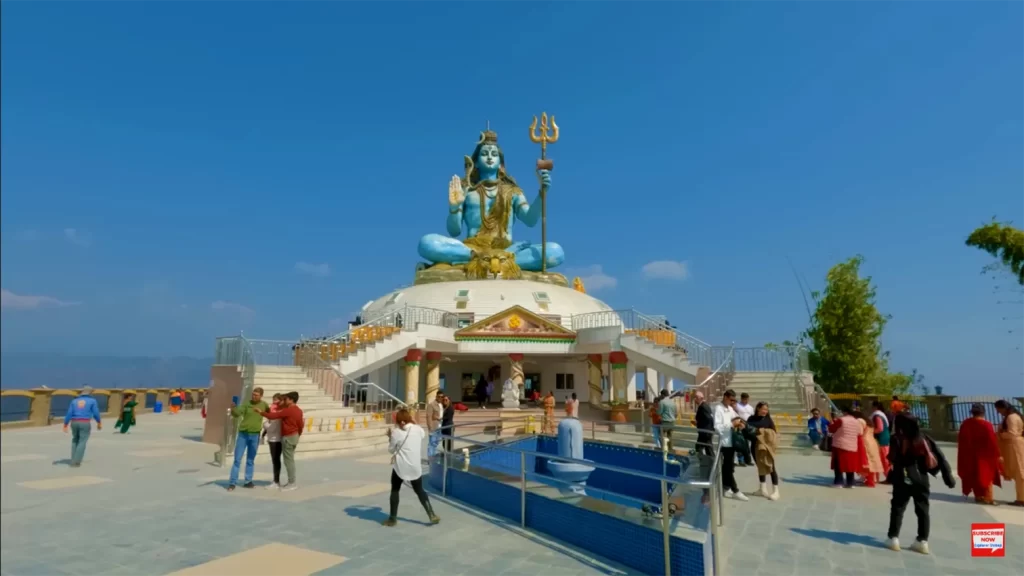
The whole mountain and its surroundings are safeguarded within the Annapurna Conservation Area. This national park covers an area of 7,629 square kilometers (2,946 square miles). Check its location on the map below.
Outline Itinerary for Mount Annapurna Base Camp
- Day 01: Drive from Kathmandu to Pokhara (820m / 2,690ft) – 7 to 8 hrs
- Day 02: Drive From Pokhara to Tikhedhunga (1,570m), 2 hrs and trek to Ulleri (1,540m / 5,050ft) – 3 to 4 hrs
- Day 03: Trek from Ulleri to Ghorepani (2,860m / 9,385ft) – 6 to 7 hrs
- Day 04: Early morning hike to Poon Hill (3,210m / 10,525ft) and trek to Tadapani (2,630m) – 5 to 6 hrs
- Day 05: Trek from Tadapani to Chomrong (2,165m) – 5 to 6 hrs
- Day 06: Trek from Chomrong to Himalaya (2,890m) – 7 to 8 hrs
- Day 07: Trek from Himalaya to ABC (4,130m / 13,550ft) via Machhapuchhare Base Camp – 6 to 7 hrs
- Day 08: Trek from ABC to Bamboo (2,350m / 7,700ft) – 7 to 8 hrs
- Day 09: Trek from Bamboo to Jhinu Danda (1,780m / 6,393ft) and nearby natural hot springs – 6 to 7 hrs
- Day 10: Trek from Jhinu Danda to Ghandruk Phedi (1,150m / 3,770ft) – 2 to 3 hrs and drive to Pokhara (820m) via Nayapul – 3 to 4 hrs
- Day 11: Drive from Pokhara (820m / 2,690ft) to Kathmandu (1,350m / 4,450ft) – 7 to 8 hrs
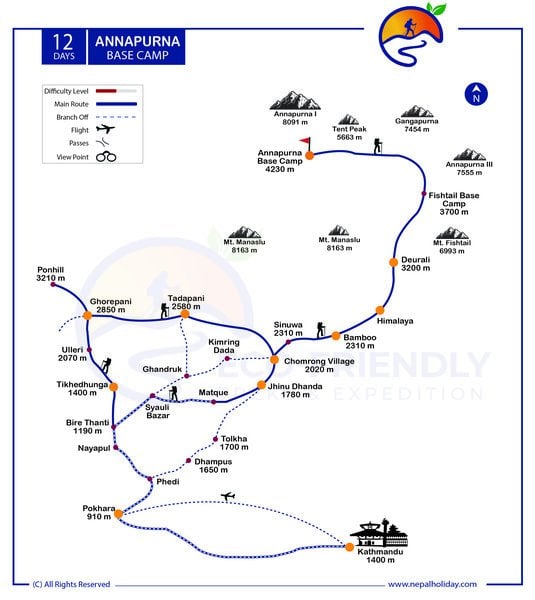
Is a Guide Mandatory to Trek to Annapurna Base Camp in 2024?
In Nepal, all trekkers must now hire a licensed guide. This rule is set by the Nepal Tourism Board and the Trekking Agencies Association of Nepal. The main reason for this rule is to keep tourists safe and protect the environment.
Guides know the area well and can share interesting information about its history and culture. This makes trekking more enjoyable and educational for tourists. Additionally, having guides helps promote responsible trekking in Nepal.
This new rule also creates more job opportunities for the local population. It means more people can work as guides and porters in the tourism industry, which brings in more money for the country.
How Much Money Do I Need for Annapurna Base Camp Trek?
The amount of money you will need for your Himalayan trek depends on how long you plan to travel. The cost for the Annapurna Base Camp trek varies depending on how much you spend while you’re there. For Nepali citizens, it’s a bit cheaper than for foreigners.
Trekking trails generally have higher prices compared to cities like Kathmandu and Pokhara. Food is particularly pricey while trekking, and there’s a reason for that—it has to be carried from the road to the lodges.
Budget Breakdown for ABC Trek
You might be wondering what factors affect the cost of the Annapurna Base Camp Trek. No worries, we’ll cover every aspect and break down the total cost for the trek (costs provided for 2024/25 season).
Transportation Cost
To get from Kathmandu to Pokhara, you have a few options. You can take a domestic flight, which typically costs between $100 and $200. Another option is to take a public bus, which costs around $10 to $25. Alternatively, you can rent a private car for about $100 to $150.
Once you reach Pokhara, you’ll need to travel to Nayapul, the starting point of the hike. You can take a taxi, which will cost you between $10 and $25.
Accommodation Cost
You can select from luxury hotels that can set you back up to US$ 500 per night, or you can stay in economical hotels that start at US$ 10 in Pokhara and Kathmandu. You have a wide selection ranging from costly hotels to mid-range and affordable lodging.
You will stay in tea houses during the trek. The cost is between $2 and $5 per night. They are very cozy places. If you want Wi-Fi or a hot shower you have to pay extra charges. They might charge you around $2 for Wi-Fi and $3 for a hot shower. Charging your electronic devices is not free either, and it could cost between $2 and $5 depending upon the altitude. As you go higher up, the facilities get more basic, and you might have to pay more for basic services.
Food Expenses
You can select from continental, Indian, Chinese, and regional cuisines that will charge US$ 100, or you can have local foods that start at around US$ 10 in Pokhara and Kathmandu. In both locations, you have a selection ranging from the priciest foods to mid-range and local foods.
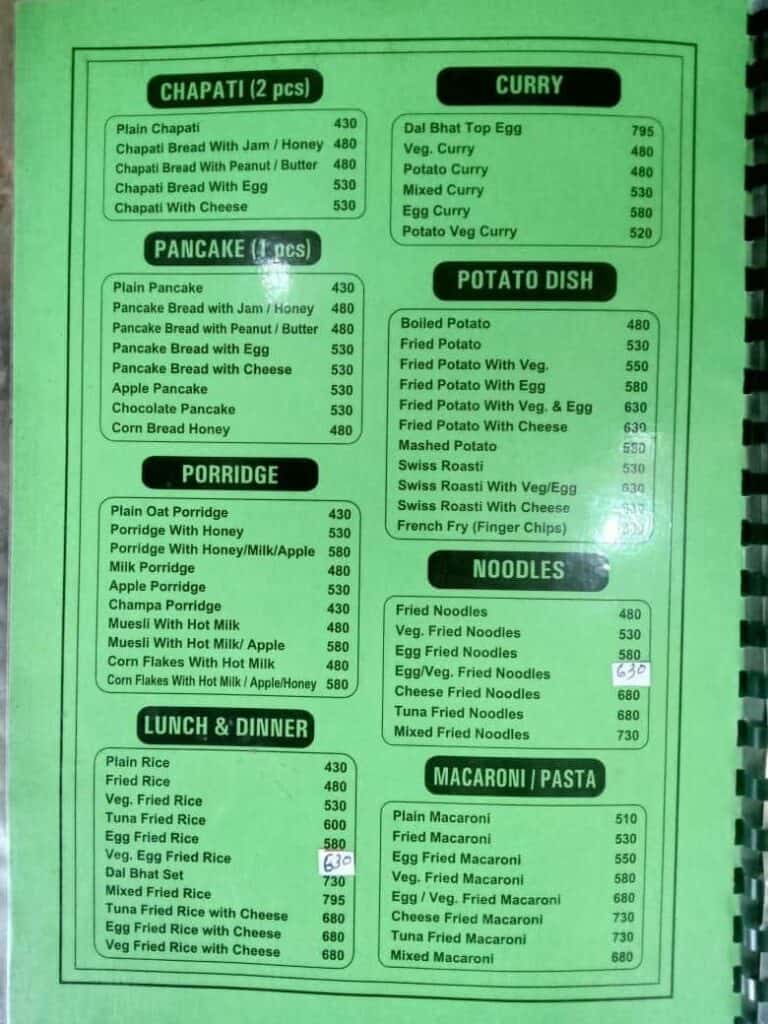
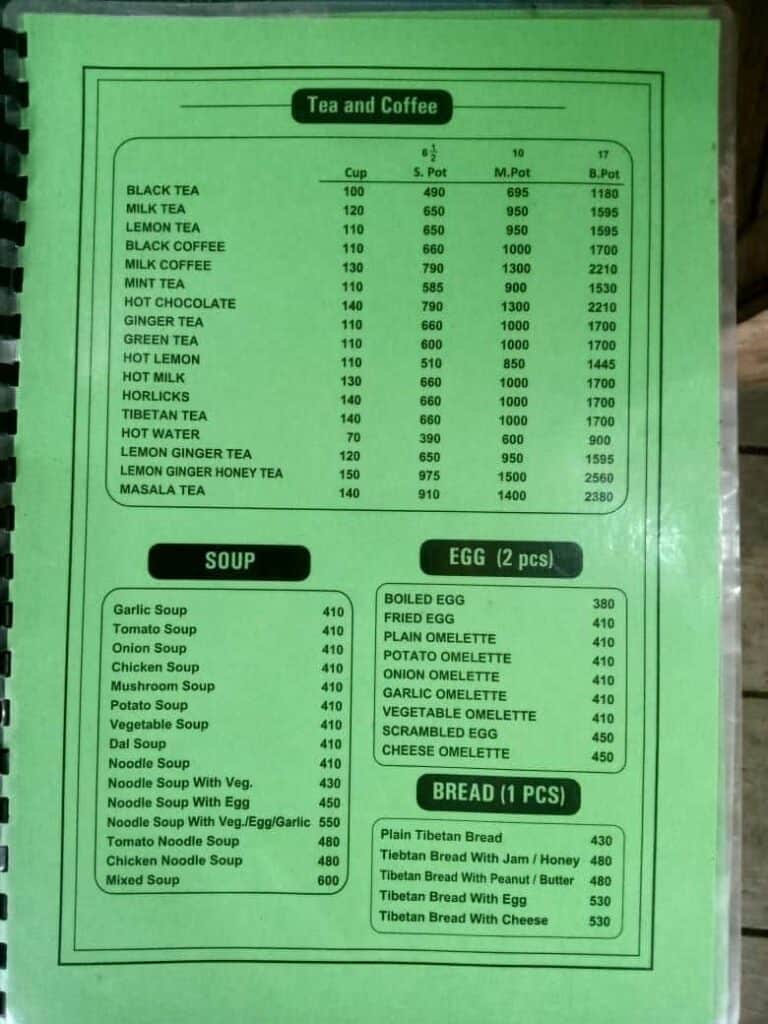
To eat like a local, a simple Dal Bhat, a dish that is popular in the area, is what you want to try. The meal is available for between 5 and 7 dollars. Steamed rice, pickles, curry, fried lentils, veggies, and non-vegetables are all served on a platter of Dal Bhat. The interesting part of having Dal Bhat is that you can have unlimited filling.
You will get a chance to choose other popular foods like pasta, noodles, bread, dumplings, spaghetti, porridge, fried rice, and other foods. You may easily find bakeries and hot and cold beverage items along the trail. On average, these items cost between $3 and $7.
Drink Expenses
You will find water stations while trekking in Annapurna Base Camp. These water stations offer boiled potable water at prices ranging from 25 to 100 Nepalese Rupees. Alternatively, you can purchase bottled mineral water priced between NPR 25 and NPR 100.
However, it is strongly discouraged to opt for mineral water bottles due to their negative impact on the local habitat, caused by the disposal of plastic bottles. So, I strongly recommend taking the water purification tablet and refilling the water as you go.
Guide and Porter Fees
For the Annapurna Base Camp trek, it’s advisable to enlist both a guide and a porter. The price range will be around $25 to $35 per day for a guide and $15 to $20 per day for a porter. Hiring these local experts not only enhances your trekking adventure but also ensures a smoother journey.
A guide will serve as your friend and they offer guidance and insights throughout the trip. They bring valuable knowledge of the trekking route and the shade of local culture. They will also handle all the necessary planning and logistical arrangements. This allows you to focus mainly on enjoying the experience.
Gear and Equipment Cost
The total cost of acquiring all the essential gear and equipment for the Annapurna Base Camp Trek can fluctuate depending on your specific requirements and preferences. All the gear and types of equipment you need can be bought or rented within the Thamel region of Kathmandu.
The bustling streets are decorated with many vibrant stores, each stocked with a large number of hiking and climbing essentials. While some might opt to purchase these items, others may find it more economical to rent them. The rent prices might start as low as $2 per day.
However, a rough estimate places the cost between $300 and $500 if you are willing to buy it new. This range accounts for the potential expenses associated with acquiring or renting all the essential gear needed for a successful and comfortable trekking experience in the Annapurna Base Camp.
Travel Insurance
Travel insurance for the Annapurna Base Camp Trek typically ranges from $50 to $150 per person and is usually required if you book with a trekking guide. When hiking in Nepal, common health issues like sprained ankles, skin infections, hypothermia, and altitude sickness are common. If someone develops a serious medical condition like altitude sickness, they might need a helicopter rescue. Most insurance plans will offer helicopter rescue, but ensure that the one you purchase covers that before buying.
World Nomads is a travel insurance company that offers coverage for more than 150 activities as well as emergency medical, lost luggage, trip cancellation and more. You can search for a plan using the link below.
Nepal Visa Costs
Travelers from countries other than India need a visa to enter Nepal. But don’t worry, if you’re flying into Kathmandu Tribhuvan International Airport, you can get your visa when you arrive. Just use the kiosk machines to fill out the Arrival Card and Online Tourist Visa forms. You will then receive your visa right there.
- USD 30 for 15 day Nepal Tourist Visa
- USD 50 for 30 days Nepal Tourist Visa
- USD 125 for 90 days Nepal Tourist Visa
Accommodation on the Annapurna Base Camp Trek
Accommodations during the Annapurna Base Camp Trek differ greatly from those in Kathmandu. However, along the trekking routes, you’ll encounter various types of basic standard lodging options. Among these, teahouses are the most popular choice for many trekkers. They offer comfortable rooms and amenities at affordable rates.
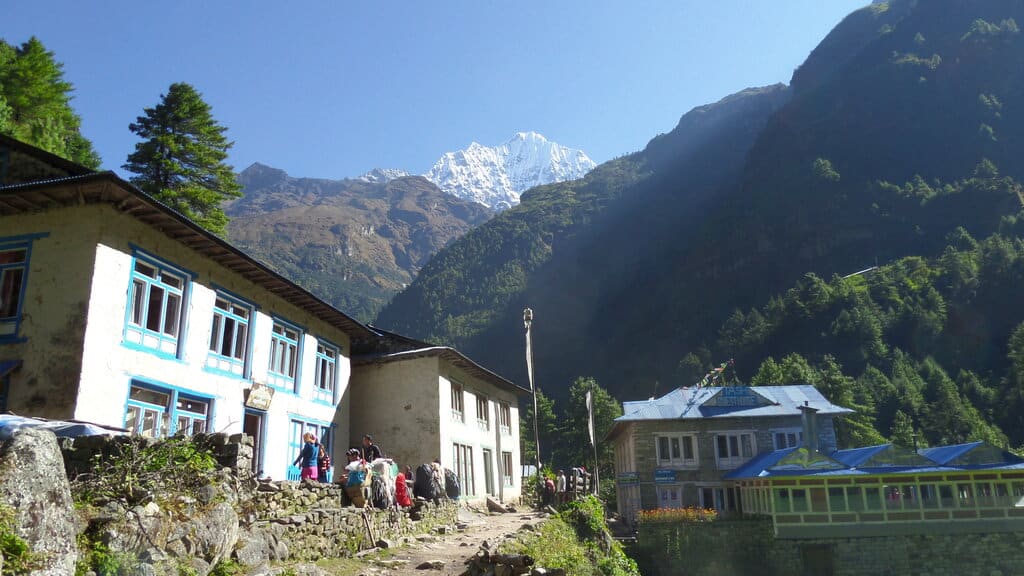
Teahouses are strategically located along the route, allowing travelers to acclimatize and immerse themselves in the local communities. Typically, these teahouses provide wooden beds with basic bedding like mattresses, pillows, and blankets. They also have Bukhari-style stoves for heating the rooms and serving meals in the same space, creating a cozy ambiance.
Due to the remote locations, electricity in these teahouses is often powered by solar energy. This power source may be unreliable during bad weather like heavy rain or winter storms. Therefore, travelers should bring their own torch lights and power banks to ensure they have light and can charge their devices, especially if they want to avoid being in the dark.
Food on the Annapurna Base Camp Trek
If you’re looking for Michelin star restaurants, I”m afraid you’re out of luck. You will not have a professional chef to cook your food at such a high altitude. Your food is cooked by the local people and you have to rely on the food that is available in the teahouses. Most of the teahouses in the Annapurna circuit are basic in standards. Sometimes the teahouses will hire professional chefs, but that will only be during peak trekking season.

The food in the lower section is varied and cheaper. But as you ascend into the higher trail the more expensive it gets. The food items will be limited because there is no proper transportation and refrigeration system at such a high altitude. So, it is always best to avoid the meat in the upper section of the trail.
Transportation options to reach the starting point
There are a few options to reach Pokhara. These vary based on budget, travel style, time, and comfort. For those who have a good budget but less time and want to escape a day from a bustling city then domestic flight is the best option for you. It only takes 25 to 30 minutes over a mesmerizing view of hills and mountains.
Pokhara is where your journey to the base camp begins. You have various options like a tourist bus, local bus, flight, or even charter a helicopter from Kathmandu or other parts of Nepal. Once you are in Pokhara, you can either hire a cab or take a local bus to reach Tikhedhunga.
Annapurna Base Camp Trek Permits
When you go trekking in the Annapurna region, you have to get two permits: one is the Trekking Information Management System (TIMS) permit and the other is the Annapurna Conservation Area Permit (ACAP). These permits are like tickets that you need to show at certain points along your trekking route.
Trekking Information Management System (TIMS)
The TIMS permit is a necessary requirement for anyone trekking in Nepal. It’s designed to keep track of trekkers’ details for their safety. The permit costs NPR 1,000 (equivalent to $20 USD) per person for group trekkers.
Annapurna Conservation Area Permit (ACAP)
If you’re planning to trek in the Annapurna Conservation Area, you’ll need to get an ACAP permit. You can get this permit from the ACAP office in either Kathmandu or Pokhara. Each person’s permit costs NPR 3,000, which is around $30 USD.
Insurance for the Annapurna Base Camp Trek
Exploring the majestic Himalayas is a dream for many adventurers, but it’s crucial to prioritize safety amidst the breathtaking scenery. Securing travel insurance is non-negotiable if you plan a trip to Nepal. Your insurance policy should provide all coverage, relating to both medical expenses and emergency evacuation, with a minimum recommended coverage of USD 100,000.
The allure of the Himalayas is certain, but it comes with its fair share of risks. Unforeseen circumstances can arise during the walk through rugged terrain or scaling towering peaks. That’s where travel insurance becomes your safety which ensures that you are prepared for any eventuality.
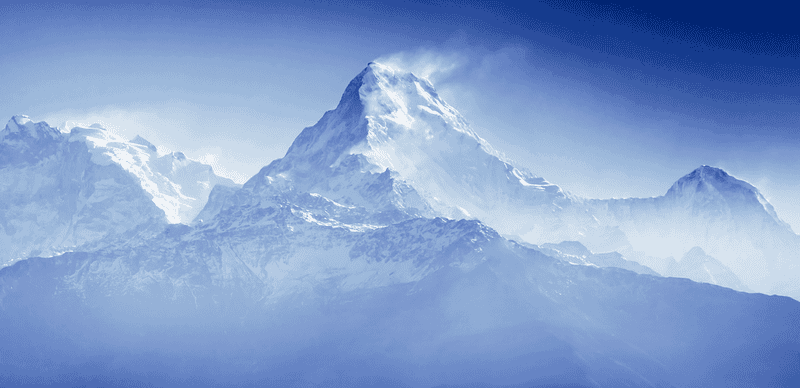
The terrain can be challenging and medical facilities are limited, so having proper insurance is important. From sudden illnesses to altitude-related issues like acute mountain sickness (AMS), the need for emergency evacuation may arise. Helicopter rescue becomes the lifeline for providing swift evacuation from remote mountain areas.
Acquiring travel insurance is easier with numerous providers offering online services. Take the time to research and select a policy that meets your specific needs. The policy should cover medical emergencies and helicopter rescue.
How Difficult is the Annapurna Base Camp Trek?
Annapurna Base Camp Trek offers a perfect blend of breathtaking scenery and physical effort with a moderate level of difficulty.
Altitude plays a crucial role in the Annapurna Base Camp Trek, which takes you to an elevation of approximately 4,130 meters (13,550 feet). This trek is not as extreme as some other high-altitude treks in Nepal, like the Everest Base Camp trek, but it still remains a concern. So, it is important to acclimatize gradually to prevent any altitude-related discomfort.
Duration is another thing to consider for this adventure. The trek could take for around 10 to 12 days depending on your chosen route and pace. This flexibility allows you to tailor the trek to suit your preferences and physical abilities. A longer duration permits ample time for rest and adjustment, ensuring a safe and enjoyable trekking experience.
The trek requires an average of 6-8 hours of walking each day which covers a total of 110 KM (68 miles) to reach base camp. Trekking guides adeptly adjust the pace according to individual capabilities and prevailing weather conditions, ensuring a balanced and fulfilling journey.
The trail is a diverse terrain, ranging from stone steps to rocky paths and uneven paths. The changing landscape demands adaptability and physical agility, particularly when traversing steep ascents and descents. Narrow sections and cliff edges provide exhilarating challenges that offer a true test of courage for those with a fear of heights.
In conclusion, the Annapurna Base Camp Trek is for adventurers with its blend of natural beauty and physical challenge. This trek promises an unforgettable journey with careful preparation and a spirit of adventure into the heart of the Himalayas.
Best time to trek Annapurna Base Camp
Exploring the Annapurna trek is an unforgettable adventure, but selecting the right time is crucial for an enjoyable experience. The best months for trekking to Annapurna base camp fall before or after the monsoon season, specifically March to May and late September to December.
During spring, the weather is optimal, offering comfortably warm days to relish the breathtaking landscapes. The lush forests burst with vibrant colors as rhododendrons and magnolias bloom along the trail. While the days are pleasant, be prepared for chilly nights as temperatures can plummet to as low as -8 degrees Celsius.

For those who are ready to trek in post-monsoon trekking the other best time to trek is around late September through December. This period is thought by many to be the best time for this iconic journey. Autumn boasts moderate temperatures, with warm days and cool mornings and evenings, creating an ideal climate for outdoor activities. Daytime temperatures range from 12 to 20 degrees Celsius on average, providing optimal conditions for trekking without discomfort.
Annapurna Base Camp Trek Tips
You are going to step into the land of amazing adventure with stunning views and unforgettable moments. Each step you take leads to the majestic Himalayas, which offer not just physical challenges but a chance to connect with the beauty of nature. The trail’s beauty and Himalayan panoramas will humble the soul and challenge the spirit. The below tips are the compass to navigate through safety, joy, and the touch of trekking fitness.
- Prioritize your physical fitness before starting the trek. Before the trek starts you should do cardio training for at least 2 months before.
- Choose comfortable and well-broken-in trekking boots. Pack suitable layers of clothing, including a high-quality down jacket.
- Keep hydrated by consistently drinking water and fluids to stay energized during the trek.
- It is always essential to move at a pace that matches your fitness level, so take your time ascending the mountains.
- Carry a comprehensive first aid kit equipped with bandages, antiseptic wipes, blister plasters, pain relief medication, and any personal prescription medications.
- Carry a fully charged mobile phone and cameras, and consider portable chargers or solar-powered devices for charging.
- Securing teahouse accommodations becomes essential so that you will get the room in peak seasons.
- Make sure to have Nepali Rupees in hand, especially in remote areas. Card facilities may be limited or unavailable during the trek.
- Allow yourself adequate rest and recovery time after completing the trek to rest your body. Spending an extra day or two in the beautiful city of Pokhara is a great option before you finally fly back home.
Preventing Altitude Sickness (AMS) during the hike
Acute Mountain Sickness (AMS) is a health issue that arises when ascending to high altitudes, typically above 8,000 feet (3000 meters). This occurs due to reduced oxygen levels and atmospheric pressure at higher elevations.
The condition stems from inadequate oxygen saturation in the blood and manifests in symptoms such as breathlessness, headaches, dizziness, nausea, vomiting, and disrupted sleep patterns. In severe cases, altitude sickness can even be life-threatening.
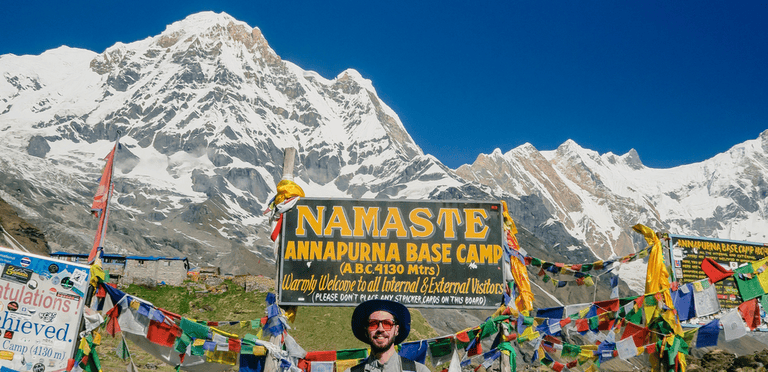
Altitude sickness can be further categorized into High Altitude Cerebral Edema (HACE) and High Altitude Pulmonary Edema (HAPE). To mitigate the risk of altitude sickness during trekking or similar activities, here are some practical tips you can follow:
- Drink a lot of water to keep yourself hydrated
- Intake of garlic and cloves to enhance the blood flow
- Take time to acclimatize during the trek
- Say no to alcohol and caffeine
- Consider taking Acetazolamide to reduce the symptoms of altitude sickness
- Carbs-rich foods allow you to use oxygen more efficiently and help maintain your energy levels.
- Lemon juice and cinnamon will be best to mitigate symptoms
- Descend if the symptoms get worse and seek medical help
Annapurna Base Camp Trek Alternative Routes
Annapurna Base Camp trek offers various alternative routes to reach it. Once you pass Chomrong, the trail toward the base camp follows the Modi River. However, there are multiple options to reach Chomrong.
You can start the Annapurna Base Camp trek from Ghorepani Poonhill, Khopra Trek, or Mohare Danda. After completing the trek, you can explore other pristine villages like Sikles, Laung, and Dhampus.
Some adventurous trekkers even extend their journey by connecting Annapurna Base Camp with the Annapurna Circuit, concluding the trek via Mardi Himal for an ultimate adventure experience.
Packing Tips for Trekking in Nepal
Take a moment to consider the specifics of your planned trek before you head to Nepal. The packing list also depends upon the time of year you will be visiting. Packing appropriately can significantly enhance your trekking experience. A well-prepared packing list ensures you have everything you need, making your journey smoother and more enjoyable.

Head, Face & Neck:
- Sun hat & woolen cap
- Sunglasses
- Sunscreens
- Moisturizers
- Lip Balm
- Face towel
- Scarf
- Neck gaiters
Upper Body:
- Comfortable Backpack for trekking
- Quick-dry and breathable T-shirts during the hike
- Waterproof rain gear
- Thermal inner
- Fleece T-shirts and jacket
- Down jacket for a night
Lower Body:
- Undergarments
- Stretchable, quick-dry, water-resistant trekking pants
- Rain gear
- Thermal inner for night
- Fleece or wool pants for a night
Hands:
- Light gloves during the hike
- Warm winter gloves, fleece or wool gloves (night)
Legs:
- Warm woolen & thin sock
- Comfortable hiking boots
- Sandals
- Knee support
Other essential Items:
- Passport
- Extra passport-size photos
- Mobile phone & charger
- Money
- Padlocks
- Trekking pole
- Headlamp with spare batteries
- Sleeping Bag
- Personal medicine
- Water bottle
Hygiene:
- Toothbrush & toothpaste
- Facial wash, soap & shampoo
- Tissues / wet wipes
- Hand sanitizer
- Quick-dry towel
- Basic first aid kit
At Last
Trekking to Annapurna Base Camp is more than just seeing beautiful scenery. It is an opportunity to experience the very heart of Nepal’s natural and cultural glory. With every turn, a new wonder comes to light, form lush forests to majestic peaks. This walk has all to offer, weather your goals are adventure, peace, or immersion in another culture.
Put on your boots, accept the challenge, and allow the Himalayas to embrace you in its charm so that you can leave with lifelong memories. Set off on the incredible journey and let the awe-inspiring Annapurna range leave a lasting impression on your inner being. The climb to Annapurna Base Camp is waiting for you, eager to charm, inspire, and test you at every turn.

